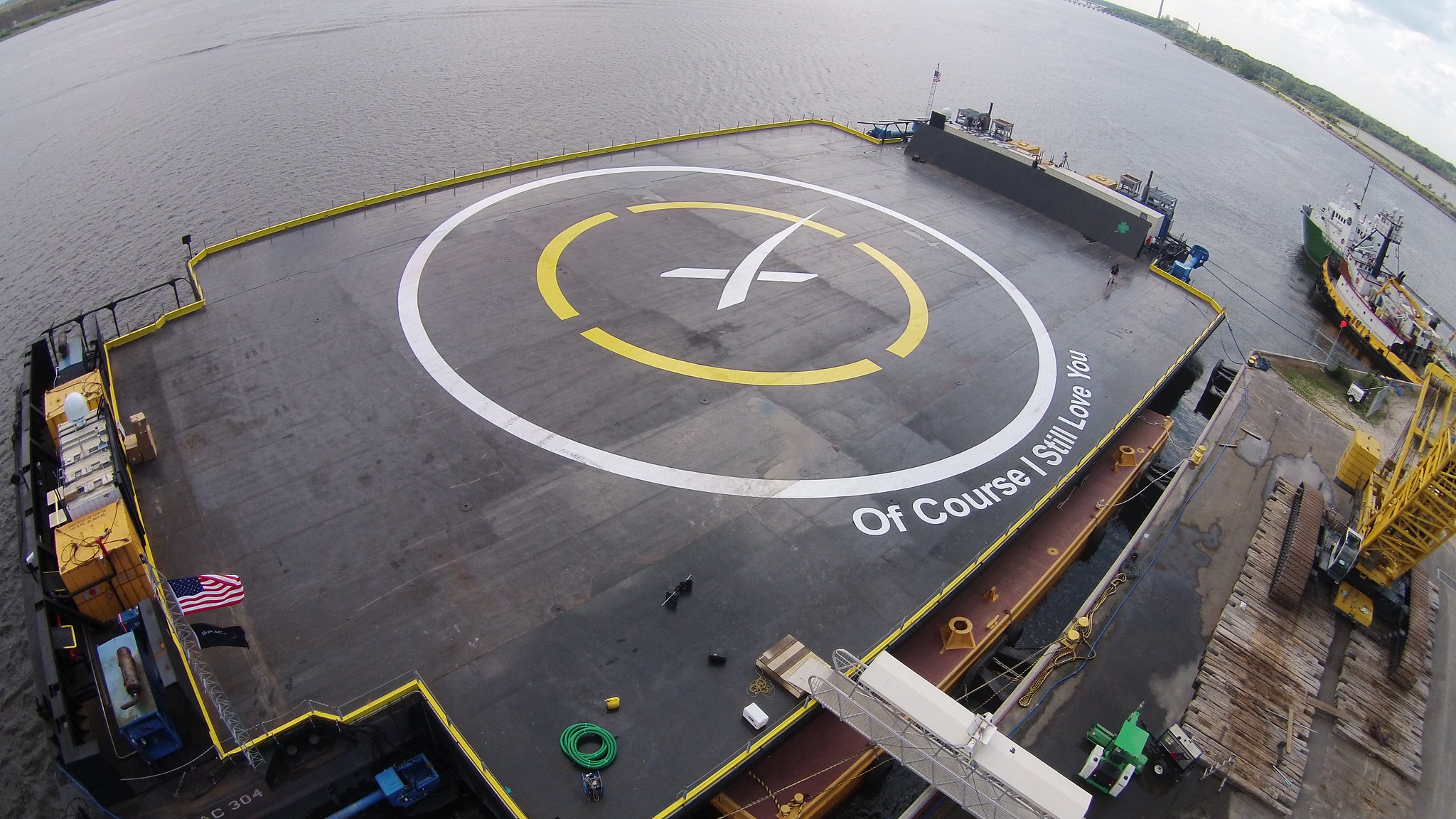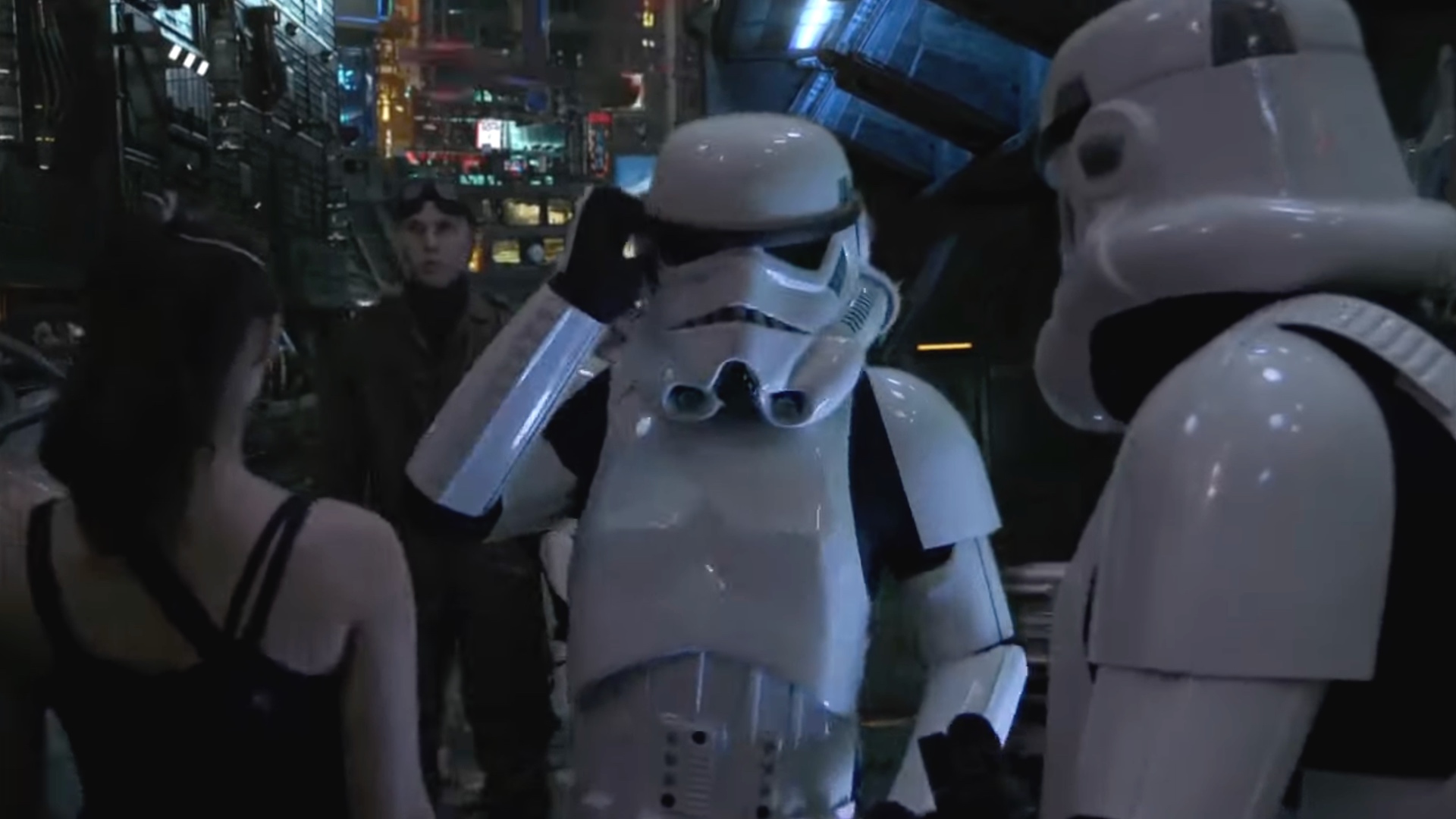SpaceX drone ship moves to California for West Coast rocket landings
Of Course I Still Love You has a new home port.

CAPE CANAVERAL, Fla. — The most prolific SpaceX drone ship has arrived on the West Coast.
The floating Falcon 9 rocket landing pad "Of Course I Still Love You" (or OCISLY for short) departed Port Canaveral on June 10, to change coasts in support of SpaceX's increasing launch operations. Currently, there are minimal flights blasting off from the company's California-based launch facilities, but that is all about to change.
OCISLY and its tug Mr. Jonah bid Florida farewell and sailed out of the Port on a multi-week journey to the other side of the country. It was smooth sailing throughout the trip, with the only dicey parts being actually crossing the Panama Canal. The drone ship is so massive that according to canal officials, a semi-submersible transport vessel had to help it through the canal.
Some OCISLY fans along the way cheered and snapped photos of the journey.
Terminó el tránsito por el @canaldepanama en las esclusas de Cocolí del Mighty Servant 1 (MS1) con la Barcaza Autónoma de @SpaceX, Of Course I Still Love You (OCISLY) rumbo al Puerto de Los Ángeles para los lanzamientos a Órbitas Polares de Starlink!@SpaceXFleet pic.twitter.com/tTzgYO1vWbJune 25, 2021
Excited onlookers (as well as officials working at the Panama Canal) took to Twitter to share the ship's journey, spotting it pass through the canal on June 25.
Of Course I Still Love You. That's it. That's the tweet. pic.twitter.com/dLv94shsqMJune 25, 2021
After a 26-day journey, the massive drone ship arrived at its ultimate destination: the Port of Long Beach. OCISLY sailed into port on the deck of an even larger ship, called Mighty Servant 1, just in time for SpaceX's first polar Starlink internet satellite mission, estimated for sometime in July.
The heavy lift ship Mighty Servant 1 floats like a toy boat in a bath tub with autonomous spaceport droneship Of Course Still Love You nestled safely on its hull. The west coast finally has a droneship again!! Now let’s recover some rockets. @NASASpaceflight pic.twitter.com/4siGwg1Ut8July 6, 2021
Rocket reusability sometimes requires shipping a floating landing pad from coast to coast in epic fashion. SpaceX’s droneship “Of Course I Still Love You” arrived in @portoflongbeach yesterday aboard Mighty Servant 1. Recovery operations will soon resume in CA! @NASASpaceflight pic.twitter.com/jRNHJlVpGEJuly 7, 2021
Dueling drone ships
In 2020, SpaceX had a banner year as the company launched a record 26 rockets — all but one launched from Florida. In the coming years, SpaceX has plans to ramp up its West Coast launch operations as the company works to fill out its Starlink satellite megaconstellation.
Breaking space news, the latest updates on rocket launches, skywatching events and more!
The broadband satellites are part of the company's effort to blanket the globe with internet coverage. To that end, SpaceX announced it would be launching a few flights from Vandenberg Space Force Base on a polar trajectory to provide service to those customers in high-latitude locations.
Here's where OCISLY comes in. Currently, the only means of booster recovery at Vandenberg is to land the first stage back on land, but that requires the Falcon 9 to have plenty of fuel reserves. To facilitate catches and reuse, SpaceX needed a drone ship back on the West Coast.
SpaceX's other drone ship, "Just Read the Instructions," used to reside in the Port of Los Angeles and was responsible for all West Coast catches, that is until the company's launch cadence ramped up so much that Florida needed to have two of the massive ships on hand.
These two ships have been responsible for a total of 69 booster recoveries to date. (An additional 20 landings have occurred on land.) OCISLY was the first to make a successful catch in May 2016 — less than a year after SpaceX's first touchdown at Landing Zone 1.
There have been a few misses in the subsequent years as SpaceX worked to perfect its recovery methods.
A third ship, which Elon has been promising for years, is nearly complete and will be following in OCISLY's footsteps in Florida. Named "A Shortfall of Gravitas," the massive ship is currently under construction in Louisana and is expected to enter service very soon.
Follow Amy Thompson on Twitter @astrogingersnap. Follow us on Twitter @Spacedotcom or Facebook.
Join our Space Forums to keep talking space on the latest missions, night sky and more! And if you have a news tip, correction or comment, let us know at: community@space.com.

Amy Thompson is a Florida-based space and science journalist, who joined Space.com as a contributing writer in 2015. She's passionate about all things space and is a huge science and science-fiction geek. Star Wars is her favorite fandom, with that sassy little droid, R2D2 being her favorite. She studied science at the University of Florida, earning a degree in microbiology. Her work has also been published in Newsweek, VICE, Smithsonian, and many more. Now she chases rockets, writing about launches, commercial space, space station science, and everything in between.
